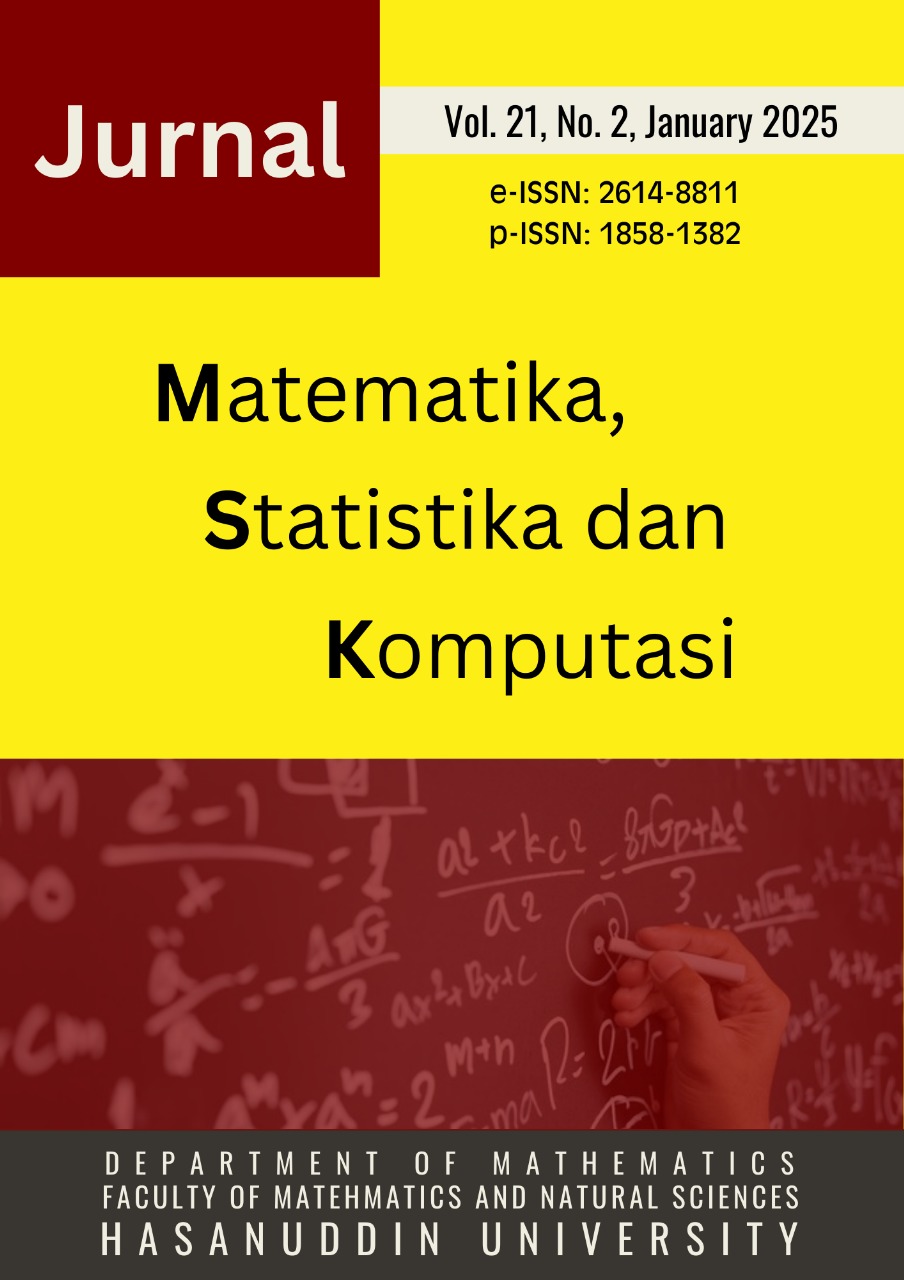The Generalized Riemann Integral
DOI:
https://doi.org/10.20956/j.v21i2.41557Keywords:
convergent, gauge, integrable, null set, partition, tagAbstract
Riemann integration theory integrates functions on a bounded interval as a Riemann sum approach (integral) where the fineness of the partitions is controlled by a number (norm) of the partition. In Generalized Riemann integral theory, the Riemann sum approach of functions is controlled by a gauge on tagged partition so that enabling integrating functions with much larger collections. Therefore, the theorems that apply to Generalized Riemann integral theory have differences in their hypotheses and conclusions. In this paper, theory of Generalized Riemann integral is studied by giving some examples of functions that are Generalized Riemann integrable such that they are not Riemann integrable; and proving some theorems that apply in this theory. The functions are integrable by constructing a gauge on the tagged partition of the interval such that the Riemann sum of the function is very close to some real number. Functions defined on a bounded interval that are Generalized Riemann integrable such that they are or not Riemann integrable have the general form of the function: a function f on [a,b] is continuous on [a,b]\Z and discontinuous on Z, where Z is a null set. Moreover, an unbounded function f on [a,b] is integrable, if the set Z where f is unbounded on Z is a countable set. Furthermore, these two criteria can be extended to infinite intervals, i.e. a function defined on an infinite interval can be Generalized Riemann integrable such that it is not Riemann integrable, if the set of discontinuous and unbounded points of the function is a null set. A sequence of integrable functions on an interval I that converges to a function on I, satisfies that this limit function is integrable if it satisfies that the existence of the dominating functions.
References
[1] Axler, S., 2020. Measure, Integration & Real Analysis. SpringerOpen, Switzerland.
[2] Bartle, R.G. &, Sherbet D.R., 2011. Introduction to Real Analysis, Fourth Edition. John Wiley & Sons, Inc., Urbana, Illinois.
[3] Fikri M, Samsurizal, Makkulau A, 2021. Perbandingan Penyelesaian Integral Riemann, Lebesgue dan HK Berdasarkan Definisi. Limits: Journal of Mathematics and Its Applications, Vol. 18, No. 2, 169-186.
[4] Fonda, A., 2018. The Kurzweil-Henstock Integral for Undergraduates: A Promenade Along the Marvelous Theory of Integration. Birkhäuser, Switzerland.
[5] Julia, A., 2019. A Henstock-Kurzweil Type Integral On 1-Dimensional Integral Currents. arXiv preprint arXiv:1905.03382.
[6] Kurtz, D.S. & Swartz, C.W., 2012. THEORIES OF INTEGRATION: The Integrals of Riemann, Lebesgue, Henstock-Kurzweil, and McShane, Second Edition. World Scientific, Singapore.
[7] Pruthi, A., 2020. Riemann Integral vs. Lebesgue Integral: A Perspective View. Advances in Mathematics: Scientific Journal, Vol. 9, No. 7, 4505-4512.
Downloads
Published
How to Cite
Issue
Section
License
Copyright (c) 2025 Jurnal Matematika, Statistika dan Komputasi

This work is licensed under a Creative Commons Attribution 4.0 International License.

This work is licensed under a Creative Commons Attribution 4.0 International License.
Jurnal Matematika, Statistika dan Komputasi is an Open Access journal, all articles are distributed under the terms of the Creative Commons Attribution License, allowing third parties to copy and redistribute the material in any medium or format, transform, and build upon the material, provided the original work is properly cited and states its license. This license allows authors and readers to use all articles, data sets, graphics and appendices in data mining applications, search engines, web sites, blogs and other platforms by providing appropriate reference.







